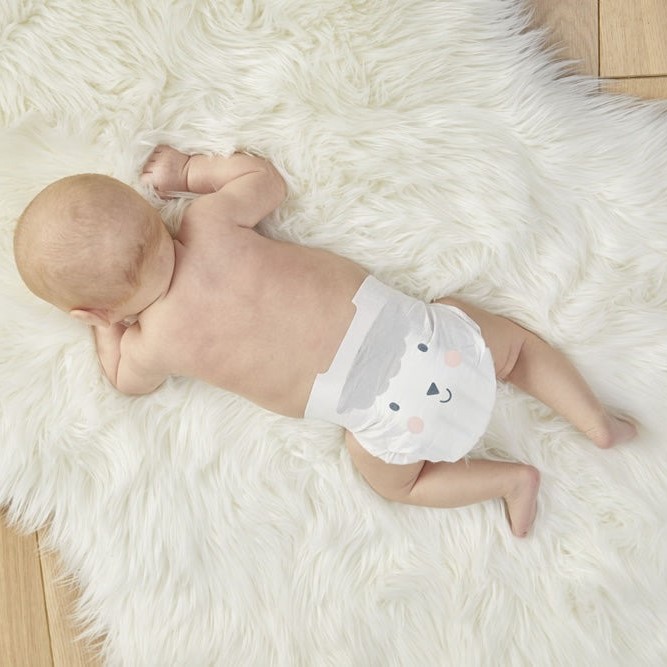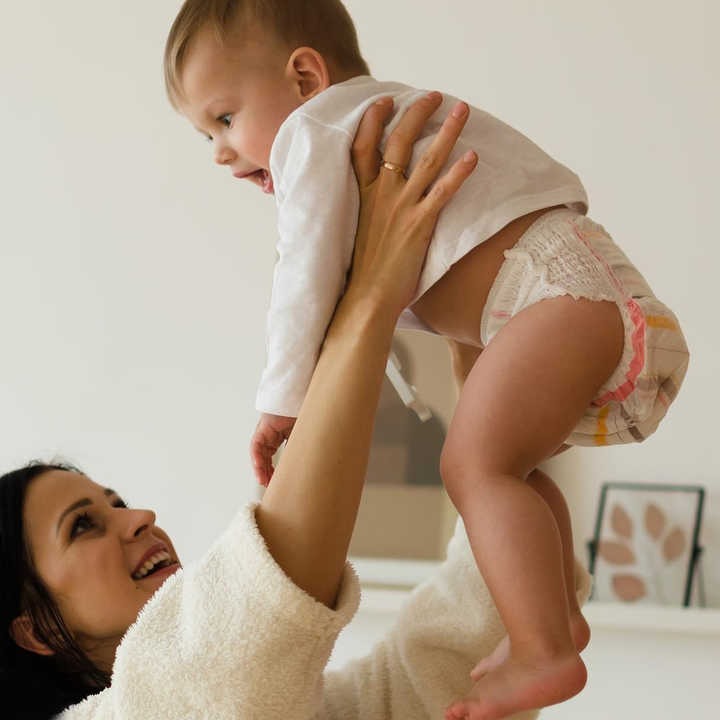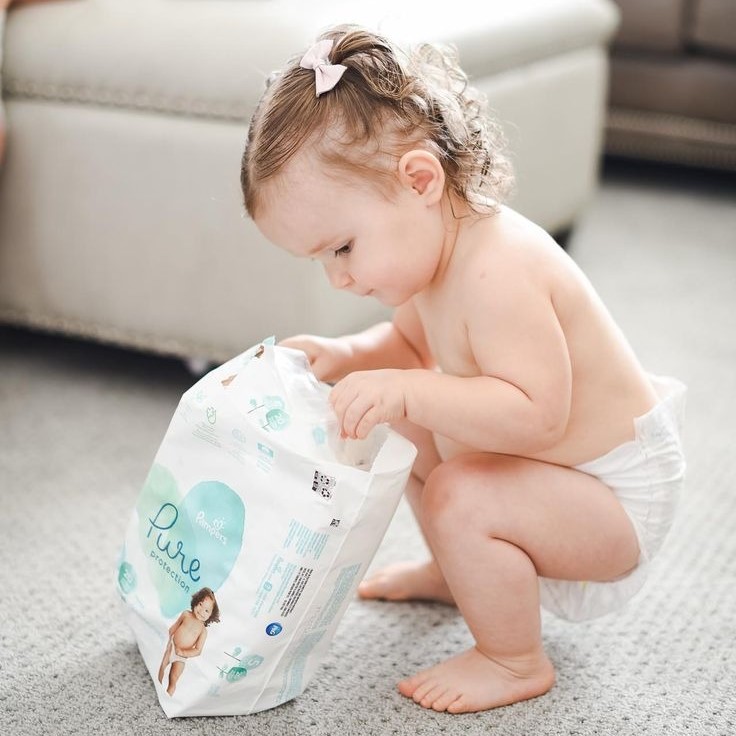Types of Diapers and When to Use Them
When diving into the world of baby care, you’ll encounter various types of diapers. Knowing which to use and when is vital. The main categories include disposable, cloth, training, and swim diapers.
Disposable diapers are convenient for on-the-go families. They are great for quick changes and night time use. Many parents opt for these during travel or outings for their convenience.
Cloth diapers, on the other hand, are reusable and eco-friendly. They are ideal for parents who prefer a natural approach. Use them when you’re at home and able to do extra laundry.
Training diapers, also known as pull-ups, help with potty training. They make sense when your child is ready to transition out of diapers. They are designed to go up and down easily for those potty tries.
Swim diapers are a must for any water activities. They keep accidents contained without swelling up like regular diapers do in water. Make sure to have these on hand for pool days or beach trips.
As you select what are the best diapers for different scenarios, consider your lifestyle and needs. Each type serves a purpose and using them wisely can lead to happier, more comfortable days for your baby.
How to Select the Best Diaper Size for Your Baby
Selecting the correct diaper size is crucial for your baby’s comfort and to prevent leaks. A poorly fitting diaper can cause discomfort and even diaper rash. Here’s how to ensure a good fit:
- Check the weight range: Diaper sizes are generally based on the baby’s weight. Look at the packaging to find the recommended weight range for each size.
- Look for snug fit: The diaper should fit snugly around your baby’s waist and legs without being too tight. There should be no gaps or red marks on the skin.
- Consider baby’s growth: Babies grow quickly. If you notice frequent leaks or marks on your baby’s skin, it might be time to move up a size.
- Try different brands: Different brands may fit slightly differently. If one brand doesn’t seem to fit well, try another to find what are the best diapers for your baby’s shape.
- Pay attention to absorbency: As babies grow, their bladder capacity increases. You may need to choose a larger size for increased absorbency to keep your baby dry through the night.
- Adjust for specific needs: If your baby is particularly active, or if you need a diaper that handles overnight use better, adjust your size selection accordingly.
By considering these points, you can help ensure that your baby stays comfortable, dry, and happy. Remember that the right size can vary with each child and brand, so staying attentive to your baby’s needs is important. Keep track of how they are fitting and perform, and make adjustments as needed. This way, you can determine what are the best diapers in terms of size and fit for your child.
Features to Look for in High-Quality Diapers

When questioning what are the best diapers, consider these essential features:
- High Absorbency: A key quality of high-performance diapers is their ability to absorb moisture effectively. This helps keep your baby’s skin dry and prevents diaper rash.
- Soft Materials: The best diapers use gentle, soft materials. Soft fabrics reduce the risk of skin irritation and provide comfort to your baby.
- Breathable Design: Good diapers allow air to circulate. This breathability helps to maintain healthy skin by reducing moisture buildup.
- Secure Fastenings: Strong, adjustable fastenings ensure the diaper stays in place. This minimizes leaks, especially for active babies.
- Wetness Indicator: Some diapers feature a line that changes color when wet. This is a helpful reminder to check and change the diaper as needed.
- Hypoallergenic Properties: They free from perfumes, latex, and chlorine are better for babies with sensitive skin.
- Size and Fit Adjustment: Look for diapers with elastic bands and multiple fastening options. They adjust to your baby’s size, offering a snug, leak-free fit.
- Eco-friendly Options: If sustainability is important to you, seek out biodegradable or cloth that contribute to less environmental waste.
By keeping these features in mind, you can better determine what are the best diapers for your baby’s needs, ensuring comfort, protection, and health.
Understanding Diaper Absorbency and Baby’s Comfort
When it comes to keeping your baby dry and comfortable, understanding diaper absorbency is key. This is a major factor in figuring out what are the best diapers for your child. The absorbency level of a diaper affects not just comfort but also how often you need to change it. Here’s what you need to keep in mind:
- Absorbent materials: Look for diapers with super absorbent polymers. These materials lock moisture away from the skin.
- Layered design: Many quality diapers have multiple layers. Each layer serves a purpose to trap and distribute wetness evenly.
- Overnight protection: For nighttime use, choose diapers with enhanced absorbency. They should provide long-lasting dryness to help your baby sleep better.
- Frequency of changes: A highly absorbent diaper means fewer changes. It reduces the risk of leaks and helps keep your baby’s skin dry.
- Comfort when wet: A good diaper should still be comfortable and not bulky when it becomes wet. This ensures your baby can move freely.
- Dryness indicators: Some diapers have features like wetness indicators. These tell you when it’s time for a fresh diaper, aiding in avoiding over-saturation.
Remember, the right balance between absorbency and comfort will prevent irritation and contribute to your baby’s overall well-being. Keep testing different brands and types of diapers to find the perfect match for your baby’s unique needs.
Disposable vs. Cloth Diapers: Pros and Cons

Choosing between disposable and cloth diapers is a key decision for parents. Here are the pros and cons to help decide what are the best diapers for your baby:
Pros of Disposable Diapers:
- Convenience: They are easy to use and dispose of, great for busy parents.
- Absorbency: These diapers often offer high absorbency, keeping your baby dry.
- Low Maintenance: No washing needed, just throw them away after use.
- Travel-friendly: They are compact and ideal for outings or travel.
Cons of Disposable Diapers:
- Cost: They can be more expensive over time than cloth diapers.
- Environment: They create more waste and are not eco-friendly.
- Chemicals: Some may contain chemicals that could irritate sensitive skin.
Pros of Cloth Diapers:
- Eco-Friendly: Reusable and produce less waste.
- Cost Savings: They can be more economical in the long-term.
- Gentler on Skin: Often made with natural fabrics that are less irritating.
- Adjustable Fit: Many styles and fastenings to grow with your baby.
Cons of Cloth Diapers:
- Time-Consuming: They require washing and drying.
- Less Absorbent: Might need more frequent changes, especially at night.
- Inconvenience: Not as travel-friendly due to the need for carrying soiled diapers.
- Initial Investment: Higher upfront cost for the cloth diapering system.
Remember, every family’s situation and every baby is different. Consider your lifestyle, your baby’s skin, and your environmental values when choosing what are the best diapers for your child.
Popular Brands of Baby Diapers and Their Reviews
When considering what are the best diapers for your baby, brand reputation and reviews play a significant role. Below are some popular brands that parents often choose and their general feedback:
- Brand A: Known for its high absorbency and soft materials, parents rave about its leak protection. A few may find it pricier than others, but many think it’s worth the extra cost.
- Brand B: This brand wins points for being eco-friendly and offering a snug fit. The diapers are also praised for their breathable design. However, some note that the cost can add up over time.
- Brand C: Offers a hypoallergenic option that’s favored by parents of babies with sensitive skin. While their diapers are highly regarded, the need for frequent changes is sometimes mentioned in reviews.
- Brand D: Parents are attracted to their competitive pricing and good absorbency. Reviews typically highlight the value for money, although fit may vary depending on the baby’s build.
- Brand E: This brand provides innovative designs with wetness indicators and secure fastenings. Most feedback is positive, but some parents wish for more eco-friendly materials from this brand.
Remember that each baby is unique, so a brand that works well for one may not suit another as effectively. Delve into reviews and test a few brands to tailor your choice to your baby’s comfort and needs. Additionally, keep an eye on how they perform over time to ensure they continue to meet your child’s changing requirements.
Tips for Preventing Diaper Rash and Maintaining Baby’s Health

Preventing diaper rash is essential for your baby’s comfort and health. To ensure your baby remains happy and rash-free, follow these practical tips:
- Change Diapers Often: Keep your baby’s skin dry by changing diapers frequently. Change them as soon as they become wet or soiled.
- Clean Gently: Use soft wipes or a damp cloth to clean your baby’s bottom. Be gentle and avoid rubbing the skin too hard.
- Use Rash Cream: Apply a barrier cream or ointment to protect against moisture. Look for products with zinc oxide for the best protection.
- Avoid Tight Diapers: Ensure diapers are not too tight. A snug fit is good, but too tight can cause chafing and rashes.
- Enable Air Flow: Let your baby go diaper-free for a little while each day. This airs out the skin and helps prevent rash.
- Use Breathable Fabrics: Choose cloth diapers or disposable brands that promote air circulation. This keeps the area dry and prevents irritation.
- Switch Products if Necessary: If rashes persist, try changing your diaper brand or wipes. Your baby’s skin may be reacting to certain materials or chemicals.
- Keep an Eye on Diet Changes: Sometimes, food can affect your baby’s stool and make rashes more likely. Watch for reactions when introducing new foods.
By keeping your baby clean, dry, and comfortable, you can prevent most cases of diaper rash. These strategies not only maintain your baby’s health but also provide peace of mind knowing you are doing what are the best for your child’s care.
Cost-Effective Strategies for Diapering on a Budget
Diapering can be expensive, but with the right strategies, you can make it more budget-friendly. Here are tips to help you save money on diapers without compromising quality or baby’s comfort.
- Buy in Bulk: Purchasing diapers in larger quantities often leads to significant cost savings. Look for bulk discounts or economy packs.
- Use Coupons and Rewards Programs: Take advantage of diaper coupons and rewards programs offered by many brands and retailers to get discounts or even free diapers.
- Consider Cloth Diapering: Although the initial cost is higher, cloth diapers can be more cost-effective in the long run. They are washable and reusable.
- Opt for Store Brands: Store brand diapers often provide similar quality at a lower price than name brands. Compare and test them out for your baby.
- Monitor Sales and Clearance Items: Keep an eye on sales and clearance sections in stores. You might find great deals on high-quality diapers.
- Choose the Right Size: Diapers that fit well are less likely to leak and waste. This prevents the need for frequent changes and saves money over time.
- Limit Use of Disposable Products: Use disposable diapers sparingly, such as for outings or overnight. Use cloth diapers at home to cut costs.
- Share Excess: If your baby outgrows diapers, consider trading with other parents, or donate to a family in need.
- Make Diapers Last: Avoid unnecessary changes. If the diaper is not soiled and only a little wet, it might last a bit longer.
By implementing these cost-effective tips, you can find what are the best diapers for your baby while also keeping your expenses down. Don’t forget that every baby’s needs are different, so what works for one family may not work for another. Keep track of your expenses and savings to determine the most economical approach for your situation.



